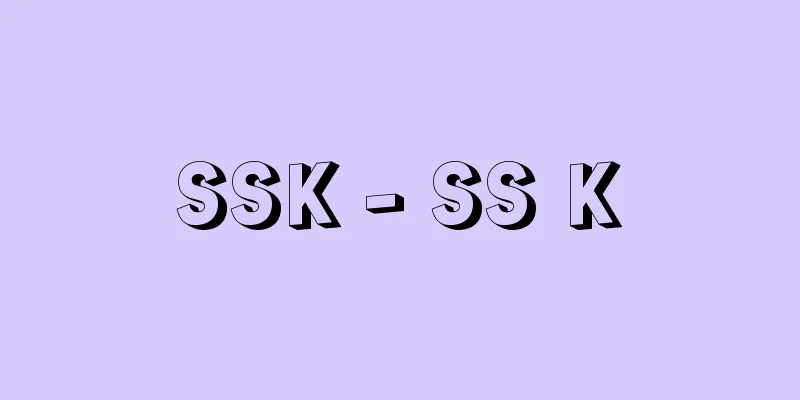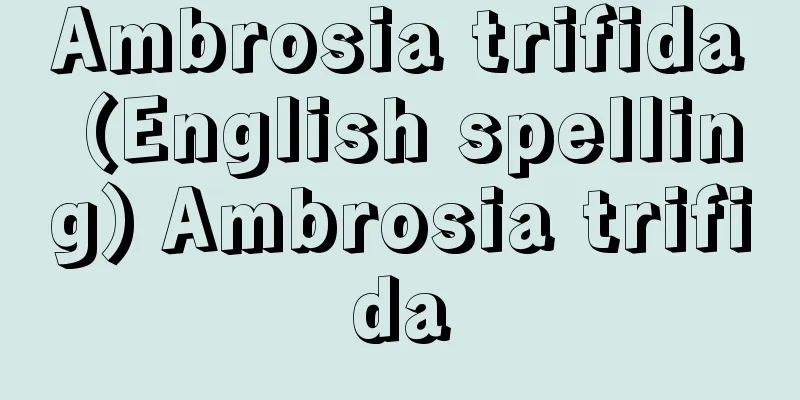Nominal chart - Nominal chart

|
Usually, the relationships between three or more variables are shown in a graph to make the relationships easier to read. There are collinear graphs and nomograms. A collocation diagram is a diagram that allows you to find pairs of values that satisfy the relationship between variables as intersections of lines. For example, in the case of uv = w, if a specific value is given to w, the relationship between u and v becomes a hyperbola, so the collocation diagram of uv = w will be a group of hyperbolae as shown in (1). If you take the logarithm of both sides of uv = w, logu + logv = logw, so if you use logarithmic graph paper, the collocation diagram of uv = w can be converted into a group of straight lines as shown in (2). In general, collocation diagrams are time-consuming to create, and when used, it is difficult to interpolate by eye, making them inferior to the collinear diagrams described below. A nomogram is a chart that allows the relationship between the values of variables to be read as a single straight line. Next, we will explain some basic types as examples. Basic type [1] f 1 (u) + f 2 (v) = f 3 (w) is a collinear diagram of additive operations, also known as a triple parallel line diagram. As shown in (1), x = mf 1 (u), y = nf 2 (v), Basic type [2] f 1 (u) f 2 (v) = f 3 (w) This is a collinear diagram of multiplication, also called a Z-shaped diagram. As shown in (1), draw parallel lines through both ends of the line segment AB = k to create a Z-shaped figure. x = mk/{m + nf 1 (u)}, Basic type [3] 1/{f 1 (u)} + 1/{f 2 (v)} + 1/{f 3 (w)} This is called a tri-intersecting line diagram. As shown in (1), draw three straight lines starting from point O, and mark x = mf 1 (u) on Ox and y = nf 2 (v) on Oy. Next, mark z' = mf 3 (w) on Ox, then project that mark onto Oz using a straight line parallel to Oy and mark it on Oz. Then, the relationship between u, v, and w in basic type [3] holds. If we set m = n here, Oz becomes the bisector of the angle made by Ox and Oy. The lens formula [Katano Zenichiro] History of NomogramsThe nomogram was invented in 1884 by Maurice d'Ocagne (1862-1938), an engineer and mathematician who was a professor at the École Polytechnique in France. He called this type of chart a nomogram and the study of it nomography. Nomograms began as a branch of applied mathematics that studies how to illustrate formulas, but because they are convenient because they can be used repeatedly indefinitely once created, they have also been used to calculate calculus and find solutions to fixed algebraic and differential equations, and have come to be used in a wide range of fields, including not only science and engineering but also medicine and economics. [Katano Zenichiro] "Calculation Charts" by Kinnosuke Ogura (1940, Iwanami Complete Books) ©Shogakukan "> Concentric point diagram (Figure A) ©Shogakukan "> Basic type of nomogram (1) (Figure B) ©Shogakukan "> Basic type of nomogram (2) (Figure C) ©Shogakukan "> Basic type of nomogram (3) (Figure D) Source: Shogakukan Encyclopedia Nipponica About Encyclopedia Nipponica Information | Legend |
|
普通、三つ以上の変数の間に成り立つ関係式を図表で表し、簡単に関係が読み取れるようにしたもので、共点図表と共線図表がある。 共点図表は、変数の関係を満たす値の組が線の交点として求められるようにしたもので、たとえばuv=wの場合、wに特定の数値を与えれば、uとvの関係は双曲線になるので、uv=wの共点図表は(1)のような双曲線群になる。もしuv=wの両辺の対数をとればlogu+logv=logwとなるので、対数方眼紙を利用すれば、uv=wの共点図表は(2)のような直線群に変換できる。一般に共点図表は作成に手間がかかり、使用する場合も目分量による補間がむずかしく、次に述べる共線図表に比べると劣る。 共線図表は、変数の値の関係を1本の直線で読み取れるようにしたもので、次にいくつかの基本型を例として解説してみよう。 基本型〔1〕 f1(u)+f2(v)=f3(w) 加法の共線図表で、三平行線型図表といわれる。(1)のようにm : nの間隔に平行に引かれた3本の直線上に 基本型〔2〕 f1(u)・f2(v)=f3(w) 乗法の共線図表で、Z字型図表といわれる。(1)のように線分AB=kの両端を通って平行線を引きZ字型の図形をつくり 基本型〔3〕 1/{f1(u)}+1/{f2(v)}+1/{f3(w)} 三交線型図表といわれる。(1)のように、1点Oから出る3本の直線を引き、Ox上にはx=mf1(u)、Oy上にはy=nf2(v)を目盛る。次にOx上にz′=mf3(w)を目盛ってから、その目盛りをOyに平行な直線によってOz上に射影してOz上に目盛る。するとu、v、wの間に基本型〔3〕の関係式が成り立つ。ここでm=nと置けば、OzはOxとOyのつくる角の二等分線となる。レンズの公式 [片野善一郎] 計算図表の歴史共線図表は、1884年、フランスのエコール・ポリテクニクの教授で工学者・数学者であったモーリス・ドカーニュMaurice d'Ocagne(1862―1938)によって創案されたもので、彼はこのような図表をノモグラムnomogram、それを対象とする学問をノモグラフィnomographyとよんだ。計算図表学は公式の図示法を研究する応用数学の一分科として始められたものであるが、一度つくっておけば永久的に反復使用できる便利さがあるので、微積分の計算や定型の代数方程式、微分方程式の解の算出などにも利用され、理工学はもちろん、医学や経済学など広範囲の分野で活用されるようになった。 [片野善一郎] 『小倉金之助著『計算図表』(1940・岩波全書)』 ©Shogakukan"> 共点図表〔図A〕 ©Shogakukan"> 共線図表の基本型〔1〕〔図B〕 ©Shogakukan"> 共線図表の基本型〔2〕〔図C〕 ©Shogakukan"> 共線図表の基本型〔3〕〔図D〕 出典 小学館 日本大百科全書(ニッポニカ)日本大百科全書(ニッポニカ)について 情報 | 凡例 |
>>: Financial statement supplementary statement
Recommend
Kurochiku (black bamboo) - Kurochiku (English spelling) black bamboo
A type of bamboo in the grass family. The black cu...
d'Arras, J.
...When the lord of Lusignan castle was to be rep...
Seaquake - Kaishin
Earthquakes are felt on ships sailing or operatin...
Total Mobilization of the National Spirit - kokuminseishinsodoinundo
This was a government-sponsored national movement...
TRH
thyrotropin-releasing hormone Source : Internal Me...
Poglietti, A.
… [history] The precursors of 19th-century progra...
Gold dust
Gold exists as placer ore. It is found in the grav...
Ohara Museum of Art
An art museum in Kurashiki, Okayama Prefecture. I...
Dynamics; potentiality
A concept used by Aristotle, which is the opposite...
Dianchi
A lake in central Yunnan, China. Located in the s...
sonata da chiesa (English spelling) sonata dachiesa
…This was written primarily for the church and th...
Barium Sulfide - Leucabarium
BaS (169.39). It is obtained by passing an equimo...
Infeed grinding - Infeed grinding
…(3) Centerless grinding machine A machine that h...
Briquetting
...For granulation, terms such as pelletizing and...
Maderna, C. (English spelling) MadernaC
…An Italian architect and engineer of the early B...









